This article was co-authored by Tu Anh Vu, DMD. Dr. Tu Anh Vu is a board certified dentist who runs her private practice, Tu's Dental, in Brooklyn, New York. Dr. Vu helps adults and kids of all ages get over their anxiety with dental phobia. Dr. Vu has conducted research related to finding the cure for Kaposi Sarcoma cancer and has presented her research at the Hinman Meeting in Memphis. She received her undergraduate degree from Bryn Mawr College and a DMD from the University of Pennsylvania School of Dental Medicine.
There are 11 references cited in this article, which can be found at the bottom of the page.
This article has been viewed 120,782 times.
Tooth nerve pain can be caused by many different reasons. It can be caused by infection, injury, tooth decay, gum disease, loose fillings, and temporomandibular joint dysfunction (TMJ). Tooth pain may also be caused by problems with the ears, sinuses, or facial muscles, and at times may be a symptom of a heart attack.[1] If you are experiencing tooth nerve pain for any reason, you can learn how to stop it to reduce your discomfort.
Steps
Treating Tooth Pain Medically
-
1Take over-the-counter medication. When you have tooth nerve pain, you may want to try some over-the-counter pain medication. You can try aspirin, ibuprofen (like Advil), acetaminophen (like Tylenol), and naproxen (like Aleve).[2]
- Make sure to follow the instructions and dosage guidelines on the label.
-
2Notice any red flags accompanying your tooth pain. Tooth nerve pain commonly involves inflammation around the base of the tooth in the pulp of the tooth. While this inflammation can often be treated, there are some red flags that should alert you to get professional dental care. These include:[3]
- Worsening or any pain with chewing
- Sensitivity to temperature lasting longer than 15 seconds after the cold or hot source has been removed
- Bleeding or discharge from around a tooth or gums
- Swelling around a tooth or swelling of the jaw or cheek
- Fever
- Injury or trauma to the area especially if the tooth is broken or loosened
Advertisement -
3See your dentist. You can use many at home treatments for tooth nerve pain. However, if these approaches do not provide relief within one to two days, call your dentist for professional treatment. Your condition may be severe and require medical treatment.[4]
- If you develop any signs of pain, bad breath, difficulty swallowing, jaw, gum or mouth swelling, or fever, call your dentist right away, as you may need emergency medical attention.
-
4Get a dental exam. When you go to the dentist, your dentist will do an exam. At first, the dentist will perform a complete exam and possibly take x-rays to look for new cavities, cracked or broken tooth enamel, or broken teeth. They will also check old fillings to see whether they need to be replaced, or if there's any recurrent decay under the filling.[5]
- Your dentist will also check your gums for any signs of inflammation, bleeding, or a need for a deep cleaning. Your dentist will also check for any abscesses, impacted wisdom teeth, and any signs of bruxism, clenching or grinding of the teeth usually done while you sleep. If none of these seem to be a problem, your dentist will check your sinuses as well as your TMJ.
- If you have any cracked, broken, or impacted teeth, bonding or tooth extraction might be needed if the tooth cannot be saved. If an abscess is causing your tooth pain, it may be necessary to perform a root canal[6] , after your dentist removes the infection through a small cut in your gum and you go through a course of antibiotics.
- In a root canal, a hole is drilled into the tooth and the infection is physically removed. The area within the tooth is then cleaned and the tooth is repaired with a filling.
-
5Treat any gum disease. Gum disease may be the cause of the tooth pain. It is important to treat gum disease early. Gum disease can precede more serious dental diseases, chronic diseases, and even other more general problems. It is important to deal with gum disease as soon as possible.[7]
- In deep cleaning, most often the first step in treating gum disease, the areas beneath the gums are cleaned with dental tools, removing bacteria and plaque, as well as hard pieces of calculus and necrotic cement, which are the main source of gum swelling.
- You will also likely be given some extra training in brushing and flossing your teeth, as well as given a remineralization solution to use as directed.
-
6Treat the TMJ. TMJ may also lead to tooth pain. If this is the cause of your tooth pain, there are a number of treatment approaches that may be taken:
- Anti-inflammatory drugs such as ibuprofen and acetaminophen can be taken for the pain.
- Sometimes, anti-depressants and/or muscle relaxing agents are prescribed for TMJ. These are often used as a short-term approach to TMJ.
- Mouth guards can be used to treat TMJ, especially if you are grinding or clenching your teeth.
- Physical therapy exercises can be done to relax the masseter muscles.
- Counseling may be considered to reduce stress and to teach various relaxation techniques.
- Surgery may be needed in severe cases of tooth pain due to TMJ.
- TMJ TENS aims for muscular relaxation after applying electrical stimulation on the main muscles that cause grinding problems.
- Botox injections can be surprisingly helpful, as long as they are given by specialists.
Treating Tooth Pain Naturally
-
1Try ice. One way to help relieve tooth nerve pain is to place an ice cube or crushed ice on the tooth. You can do this as long as the tooth isn’t sensitive to cold. Alternatively, you can crush some ice and place it into a balloon or the cut-off finger of a non-latex glove to make an ice pack.[8]
- Make sure to tie off one end of the balloon or glove and place the compress on the tooth.
- You can also use the ice pack on your skin outside the painful tooth to provide pain relief.
-
2Use garlic, onion, or ginger. Garlic, onion, and ginger has been shown to help relieve tooth pain. Start by cutting a small piece of garlic, onion, or ginger. Place directly on your painful tooth inside your mouth. Gently bite down to release the juice.[9]
- The juice from the garlic, onion, or ginger will help numb and calm your gums.
-
3Massage your gums with essential oils. You can massage your gums with oils to help relieve tooth nerve pain. Try a few drops of warm olive oil or some warm vanilla extract. You can also try essential oils that help with tooth pain. Put these oils on your fingers and massage them into your gums. You can also make a mouth rinse with a few drops of essential oils and a few ounces of water. Never swallow any of these oils because they can be toxic. Essential oils you can use for tooth pain include:[10]
- Tea tree
- Clove
- Sage
- Cinnamon
- Goldenseal oil
- Peppermint
-
4Make a tea compress. Tea compresses may help with your tooth nerve pain. To make a compress with a teabag, soak an herbal teabag in warm water. After the teabag has steeped in the warm water, place the teabag over the tooth. Leave the teabag there for at least five minutes. You can do this two to three times a day while you're in pain. Teas that have been shown to help with tooth pain include:
- Echinacea tea
- Goldenseal tea
- Black tea
- Sage tea
- Green tea
-
5Try an asafetida paste. Asafetida is a plant used in traditional medicine. This plant usually comes as a powder. To make the paste with asafetida, mix ¼ teaspoon of the powder with fresh lemon juice until it is a paste-like consistency. Once the ingredients are mixed fully, rub the paste over your tooth and gum. Leave it on for around five minutes.[11]
- Rinse your mouth with water afterwards.
- You can do this two to three times a day.
Using Rinses to Relieve Tooth Pain
-
1Use a sea salt rinse. Sea salt is helpful for tooth pain, and you can make a sea salt rinse for your mouth. To make the rinse, dissolve ½ teaspoon of sea salt in four ounces of warm water. Hold the solution in your mouth over the painful tooth for 30 to 60 seconds. Spit it out and repeat two to three times.[12]
- You can also add antibacterial substances to this mixture to reduce the pain. Mix salt water, propolis, and mouthwash in equal qualities.
- Rinse your mouth with warm water afterwards. Make sure not to swallow the rinse.
- You can do this three to four times a day.
-
2Make an apple cider vinegar rinse. Apple cider vinegar has antiseptic properties that can help alleviate tooth pain. To make an apple cider vinegar rinse, mix ¼ cup of warm water and 1/4 cup of apple cider vinegar. Hold the solution in your mouth over the painful tooth for 30 to 60 seconds. Spit it out and repeat 2-3 times. Do not swallow the water-vinegar mixture.[13]
- Rinse with warm water afterwards.
- You can do this three to four times a day.
-
3Try hydrogen peroxide. Rinse your mouth with 3% solution of hydrogen peroxide. Swish it around your mouth for 30 to 60 seconds and then spit it out. Make sure not to swallow this solution.[14]
- Avoid alcohol, as it can cause severe dehydration or even burns on your soft tissue.
Expert Q&A
Did you know you can get expert answers for this article?
Unlock expert answers by supporting wikiHow
-
QuestionHow can I treat my tooth pain at home?
 Tu Anh Vu, DMDDr. Tu Anh Vu is a board certified dentist who runs her private practice, Tu's Dental, in Brooklyn, New York. Dr. Vu helps adults and kids of all ages get over their anxiety with dental phobia. Dr. Vu has conducted research related to finding the cure for Kaposi Sarcoma cancer and has presented her research at the Hinman Meeting in Memphis. She received her undergraduate degree from Bryn Mawr College and a DMD from the University of Pennsylvania School of Dental Medicine.
Tu Anh Vu, DMDDr. Tu Anh Vu is a board certified dentist who runs her private practice, Tu's Dental, in Brooklyn, New York. Dr. Vu helps adults and kids of all ages get over their anxiety with dental phobia. Dr. Vu has conducted research related to finding the cure for Kaposi Sarcoma cancer and has presented her research at the Hinman Meeting in Memphis. She received her undergraduate degree from Bryn Mawr College and a DMD from the University of Pennsylvania School of Dental Medicine.
Board Certified Dentist My recommendation would be to see a dental professional first to see what's going on. I don't personally recommend over-the-counter medication for tooth pain, unless it's coming from your doctor after a dental procedure or as a temporary measure until you get to your dental appointment. It will just mask the pain temporarily, but the underlying condition or infection is still there and still needs treatment.
My recommendation would be to see a dental professional first to see what's going on. I don't personally recommend over-the-counter medication for tooth pain, unless it's coming from your doctor after a dental procedure or as a temporary measure until you get to your dental appointment. It will just mask the pain temporarily, but the underlying condition or infection is still there and still needs treatment.
Warnings
- Always see your dental professional as soon as possible if you're having tooth pain, as it could indicate serious problem that requires treatment.[15]⧼thumbs_response⧽
References
- ↑ http://www.emedicinehealth.com/toothache/article_em.htm
- ↑ http://www.mayoclinic.org/first-aid/first-aid-toothache/basics/art-20056628
- ↑ http://www.emedicinehealth.com/toothache/page2_em.htm
- ↑ Tu Anh Vu, DMD. Dentist. Personal interview. 7 May 2020.
- ↑ Tu Anh Vu, DMD. Dentist. Personal interview. 7 May 2020.
- ↑ https://www.humana.com/learning-center/health-and-wellbeing/healthy-living/toothaches
- ↑ http://www.nidcr.nih.gov/oralhealth/Topics/GumDiseases/PeriodontalGumDisease.htm
- ↑ http://www.mayoclinic.org/first-aid/first-aid-toothache/basics/art-20056628
- ↑ https://www.humana.com/learning-center/health-and-wellbeing/healthy-living/toothaches
- ↑ http://www.arizonafamilydental.com/blog/toothache-home-remedies-really-work/
- ↑ http://www.ncbi.nlm.nih.gov/pmc/articles/PMC3459456/
- ↑ http://www.mayoclinic.org/first-aid/first-aid-toothache/basics/art-20056628
- ↑ http://www.mindbodygreen.com/0-14833/11-ways-to-use-apple-cider-vinegar-every-day.html
- ↑ http://www.besthealthmag.ca/best-you/home-remedies/natural-home-remedies-toothache/
- ↑ Tu Anh Vu, DMD. Dentist. Personal interview. 7 May 2020.
About This Article
If you have tooth nerve pain, the easiest way to treat it is to take over-the-counter pain medication like aspirin or ibuprofen. To treat your pain without medication, place an ice cube or crushed ice on the tooth. Alternatively, place an ice pack against your face where your tooth hurts. By icing the area, you'll temporarily numb the pain. Another way to soothe your tooth pain is to rinse your mouth with a mixture of ½ teaspoon of salt in 4 ounces of warm water. Hold the salt rinse over the painful tooth for 30 to 60 seconds before spitting and repeating 2 to 3 times. If your tooth is still in pain after a couple of days, see a dentist for professional treatment. To learn more from our Dental co-author, like how to treat tooth pain caused by gum disease, read on.

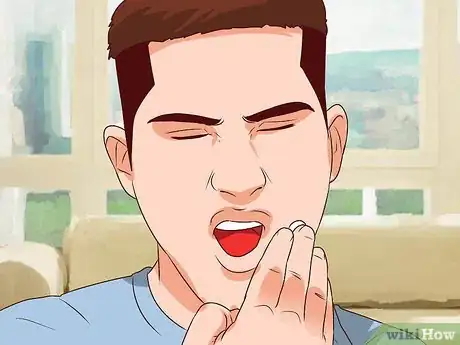

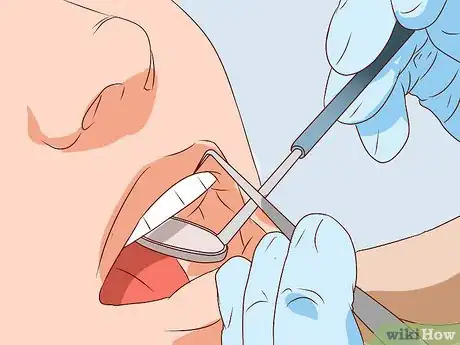

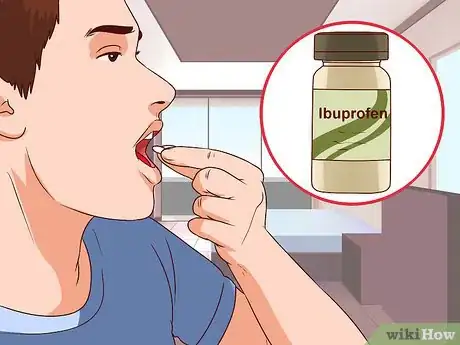
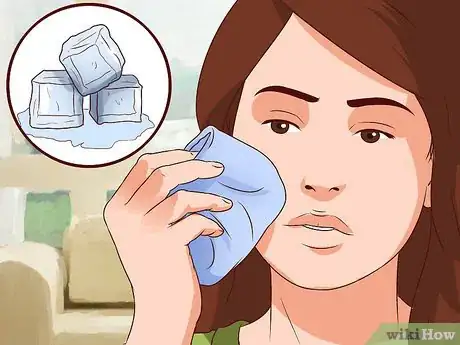
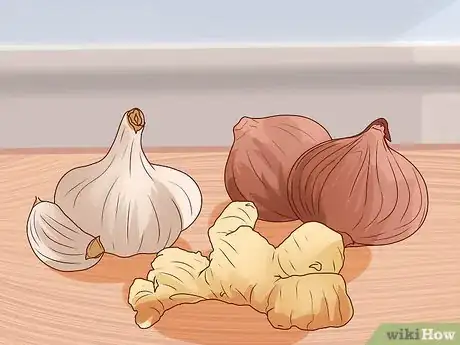


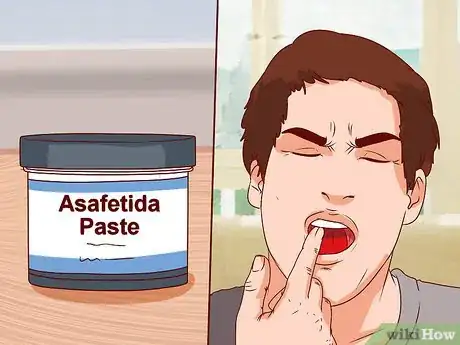

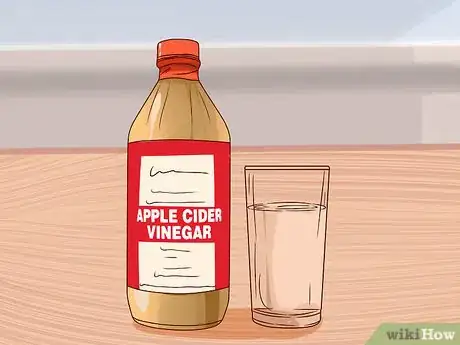
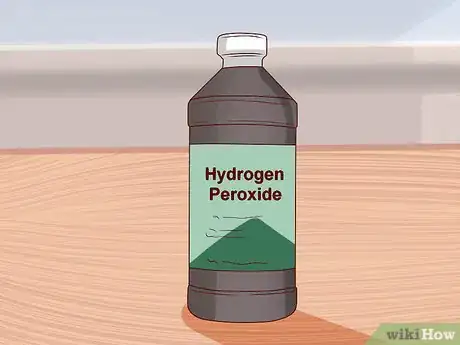
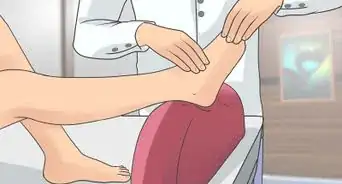
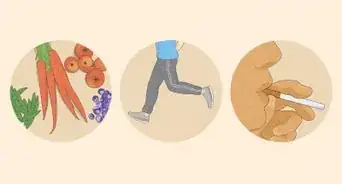


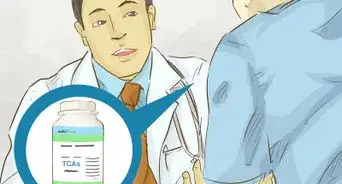
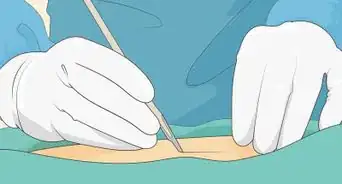

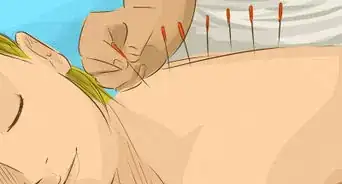
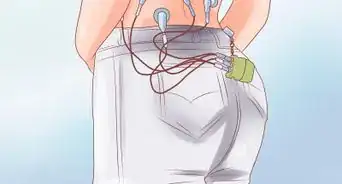




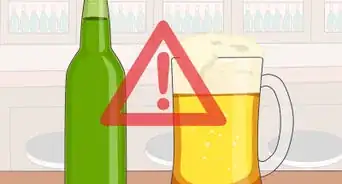









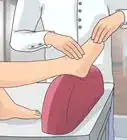






































Medical Disclaimer
The content of this article is not intended to be a substitute for professional medical advice, examination, diagnosis, or treatment. You should always contact your doctor or other qualified healthcare professional before starting, changing, or stopping any kind of health treatment.
Read More...